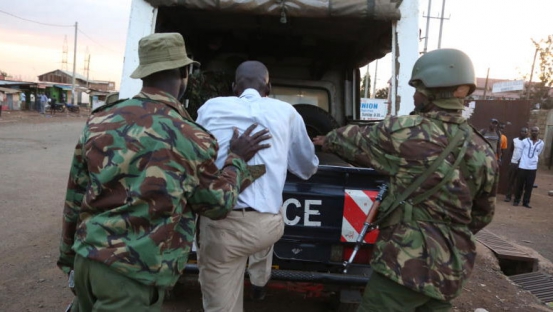
If you have ever been arrested by Kenya Police, then you must have come across this scenario.
If it was on a street, the cops were in twos. If it was a police station, they were also in twos.
One cop was bad, very bad. He or she would threaten to lock in your balls because Kenya “si ya mama yako!” Never mind there was no connection between your mother and the motherland.
In the dark days of single-party state, the bad karao was the one who issued offenders with several military slaps, turning you deaf, besides making your ears to resemble those of an elephant. The bad cop, was bad, very bad.
Then there was the good cop. He spoke politely, often restraining the bad cop from being too cruel. Often times, the bad cop left you with the good cop whom you told: “Ndugu, wanaume ni kusaidiana!”
And you had no qualms slipping some bribe to the good cop, to which the bad cop sneered with: “Una honga serikali... huyu talala ndani!”
Somehow, most spoke broken Kiswahili in an accent that said they came from Kaptagat, even though he could be going by the name Kasyoki!
Why is it that there is always a bad/good cop in all situations?
Well, it is not a coincidence. It is a tactic that came from the military. The tactic was created by German military intelligence officer, Hanns Joachim Scharff, during World War II.
It has been used by army interrogators and the police, including here in Kenya, ever since.
Hanns employed humility, kindness and other non-threatening tactics (like sharing his wife’s cakes) to extract information from captured prisoners of war.
In The Interrogator, biographer Raymond Tolliver recalls the case of a downed fighter pilot, whom Hanns took for a countryside walk. During the walk, Hanns wondered whether American planes had shortage of chemical as they were leaving white, rather than red smoke. The pilot had no idea Hanns was fishing for military intelligence.
The pilot corrected Hanns, saying the white smoke signaled other pilots that ammunition was running out!
The ‘Sharff technique’ was published in Law and Human Behaviour as a more effective style, including the other one cited above of the good cop/bad cop, in which Hanns would be the good cop after a bad cop had his intimidating sessions.
In such situations, the offender or prisoner knows that if there is a deal to be cut, it’s the good cop he would turn to.
In Kenya, it’s the good cop to whom one whispers: “Ndugu, wanaume ni kusaidiana!”
 The Standard Group Plc is a multi-media organization with investments in media
platforms spanning newspaper print
operations, television, radio broadcasting, digital and online services. The
Standard Group is recognized as a
leading multi-media house in Kenya with a key influence in matters of national and
international interest.
The Standard Group Plc is a multi-media organization with investments in media
platforms spanning newspaper print
operations, television, radio broadcasting, digital and online services. The
Standard Group is recognized as a
leading multi-media house in Kenya with a key influence in matters of national and
international interest.









